Many people are trading their dryer sheets for dryer balls, but did you know you can make your own DIY Dryer Balls? It is super easy, and they last for years.

I was inspired to make my own DIY dryer balls when I heard about the many benefits of using them.
Benefits of Using Dryer Balls
Softens Clothing– As dryer balls bounce around in the dryer, they loosen the fibers of clothing, making them softer.
Reduces Dry Time– Again, those bouncing dryer balls allow for more air flow around items in the dryer, which reduces dry time. I actually tried this out for myself. I timed a load of laundry using a dryer sheet vs. the dryer balls (I kept the loads equal in size with 30 items in each load). Here are the results:
Dryer Sheet= 50 minutes, 45 seconds | Wool Dryer Balls= 41 minutes, 41 seconds
That’s an 18% reduction in dry-time!
Saves Energy & Money– Due to the shortened dry time, you save on both energy and the cost of electricity/gas.
No Harmful Ingredients– Because DIY dryer balls are made of 100% wool, there are no questionable ingredients.
Helps Reduce Static– Wool absorbs moisture from the wet clothes at the beginning of your dry cycle and releases it as it dries; which should help to reduce static cling. If you are still experiencing static when using dryer balls, see the “Common Questions” section of this post for more ideas on how to reduce static when using dryer balls.
What You Need to Make Your Own Dryer Balls
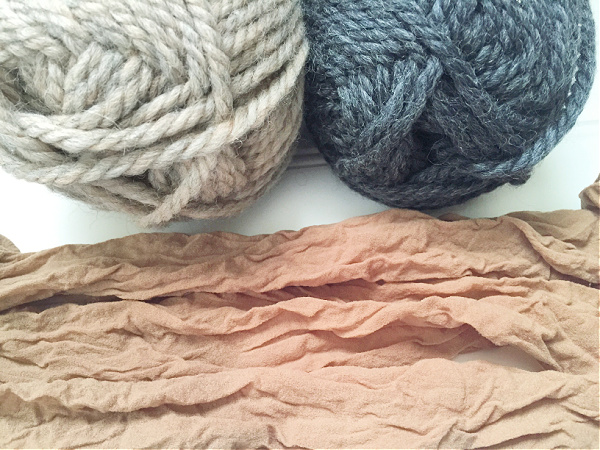
Affiliate links may be used. Please see our advertising disclosure for more information.
- 100% Wool Yarn– Remember 100% wool… I found a lot of acrylic yarn in the craft store, and only a few skeins of 100% wool. Dryer balls cannot be made with acrylic yarn, because it does not “felt” like wool yarn.
- Nylons
How to Make DIY Dryer Balls
Start by wrapping the yarn several times around your pointer and middle finger.
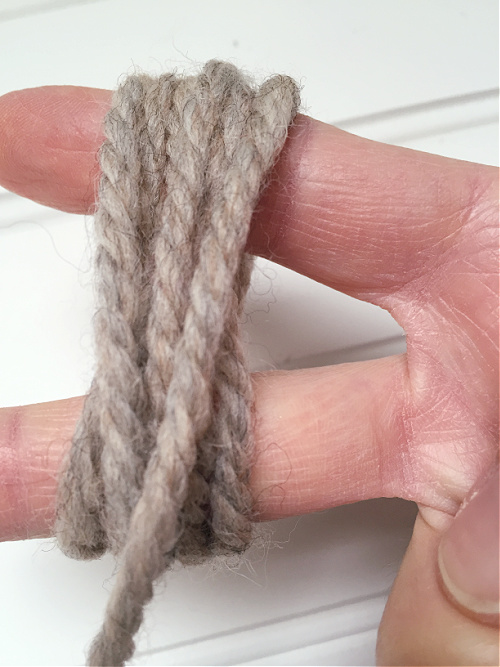
Pinch it in the middle and then wrap the yarn around the pinched area.
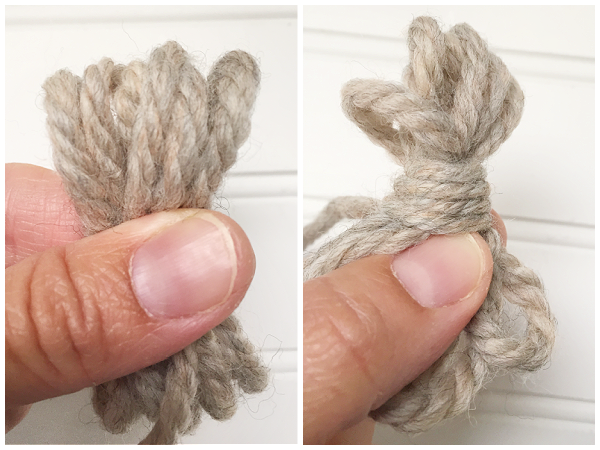
Keep wrapping and wrapping… and wrapping, working the yarn around in a circle until you get a ball about the size of a tennis ball (mine are probably a little smaller).
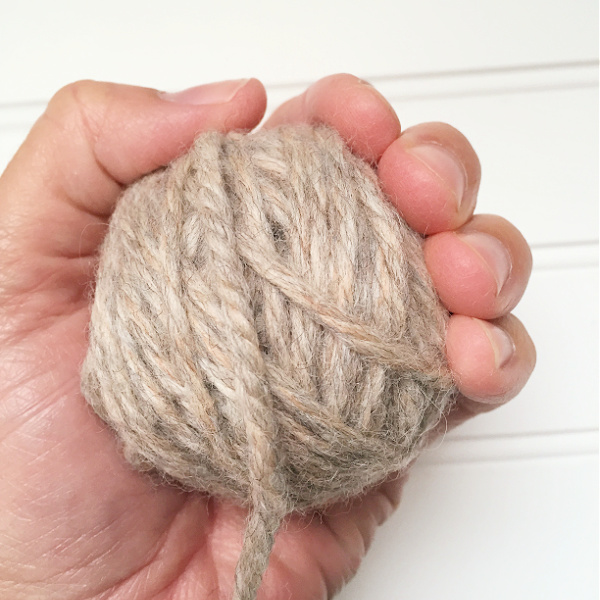
Cut the yarn and tuck it under some of the other layers.

I was able to make 6 dryer balls with 2 skeins of yarn.
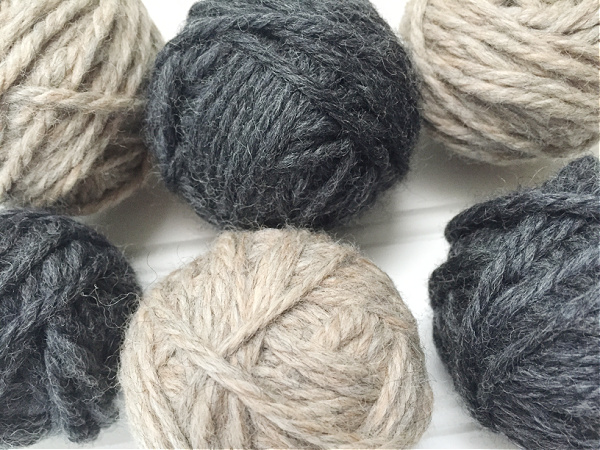
Next, you’ll want to place each ball into the leg of some nylons, tying a knot in between each ball.
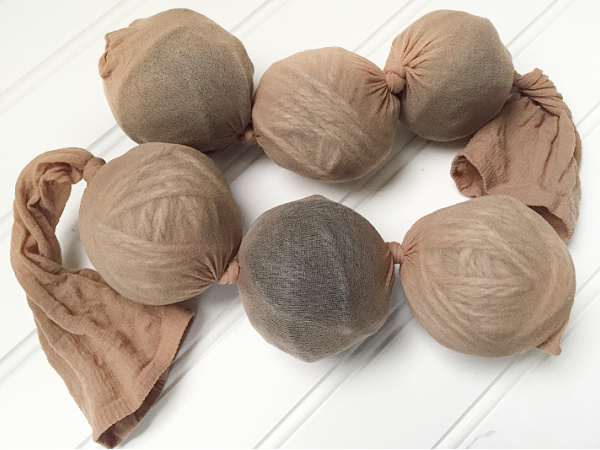
Take the nylon-wrapped wool dryer balls, and throw them into your next load of towels, washing them in hot water. After washing, throw them in the dryer on high heat. This process causes the wool to “felt” and stick together. Once you remove them from the dryer, cut the nylons to free the wool balls.
Feel free to store them in a bowl if you have a counter in your laundry room, but I find it easiest to leave them in the dryer.
How to Use Wool Dryer Balls
To use, simply add 3-6 dryer balls to your dryer along with the wet clothes. Dry clothes per label instructions.
Looking for More Laundry Room DIYS?
DIY Laundry Scent Booster | DIY Laundry Detergent | DIY Fabric Softener
Common Questions About Using Dryer Balls
I Miss the Smell of Dryer Sheets. How Can I Add Scent to Dryer Balls?
If you’d like to add scent to your DIY dryer balls, simply add a drop or two of essential oil to a couple of the dryer balls. I, personally, go with lavender, but they also make essential oil blends that are meant to scent laundry, like this one called “Tumble & Tidy”
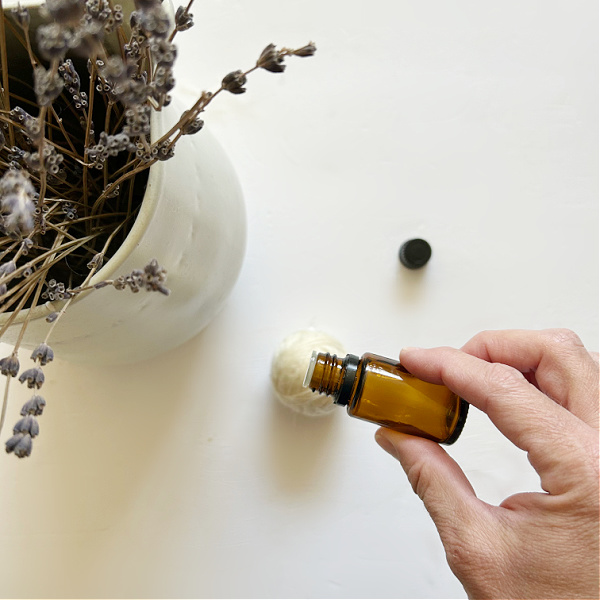
How Can I Reduce Static When Using DIY Dryer Balls?
You may find that dryer balls don’t eliminate static as well as store-bought dryer sheets. Here are a few things you can do to reduce static when using dryer balls:
Clip A Safety Pin to Your Dryer Balls– I know. This sounds so strange. Trust me when I say I tried a lot of ways to reduce static when using dryer balls; everything from aluminum foil balls to rags soaked in fabric softener. Nothing worked! Then someone said to clip a safety pin to the dryer balls. I didn’t think this was going to work at all, but surprisingly, it did the best job of anything else I’d tried.
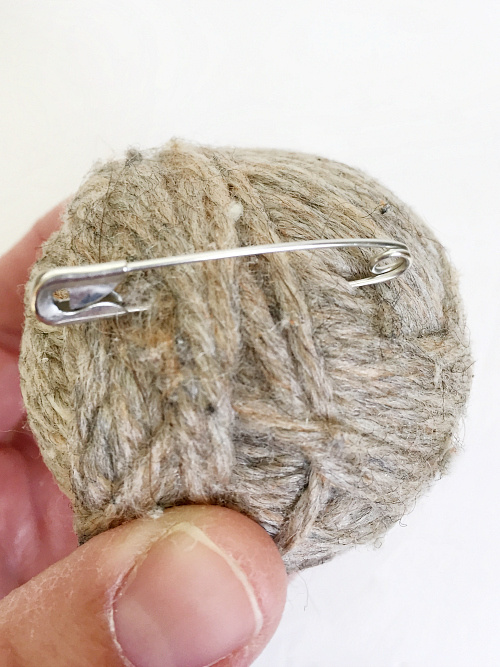
Do Not Over-Dry Your Clothing– Dry your clothes for the shortest time needed, and at the lowest heat setting. Think about times you’re in a dry environment and get shocked when touching a shopping cart, for example. Dry air means increased static.
Natural Fibers Have Less Static Than Synthetic Fibers– The first time I used dryer balls, the first couple items I pulled from the dryer were full of static. I was so disappointed. But as I removed all the other clothes, they seemed completely static-free. I was a little baffled; how could some items have so much static, and others, hardly any? What I found was that, while wool dryer balls work great at reducing static on natural fabrics (like cotton), it doesn’t do well with synthetic materials, like polyester. I checked the label on the static-y items and both were 100% Polyester. I tried another load with towels, socks, and undergarments (all 100% cotton), and when the load was finished, there was no static. If you have synthetic fabrics in your load, you may want to separate them out and either hang dry them, or dry them separately for less time.
How Long Do Dryer Balls Last?
Dryer balls can last for years. If you notice them starting to fall apart, that’s when it’s time to make new ones. I typically end up losing mine long before they start falling apart 🙂
Love it? Pin it!
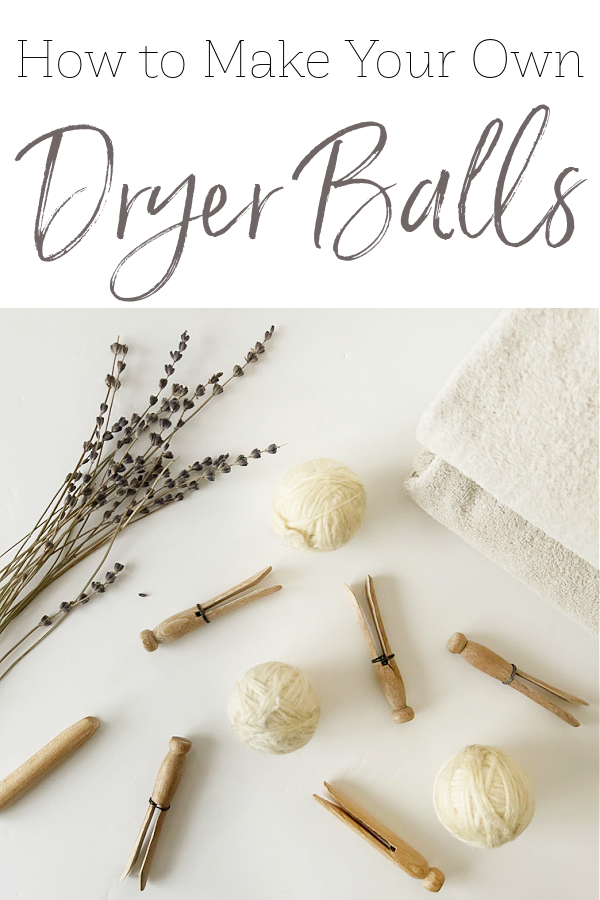
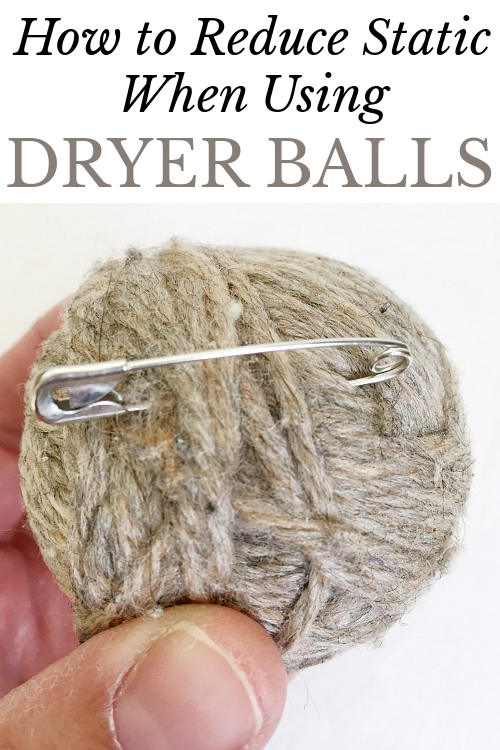


Hi, Would love to make these dryer balls but I don’t wash anything in hot water any more. Is there another way to felt the dryer balls? Thanks, Katt
Hello 🙂 I love your posts and hacks.. Do you have alternatives for liquid fabric conditioners too? Thank you..
Thanks! I always enjoy your posts. I rolled up some wool socks that we no longer wear, and tucked them inside themselves. These make great dryer balls.
I also tried some Cotten socks which seem to be working well. Do dryer balls need to be wool to remove static?
Years ago I would go to Goodwill and buy any sweater as long as it was 100 % wool. Unravel make dryer balls , easy peasy
My daughter seemed to react to the dryer balls I bought recently. Not sure what type of wool.
Have you found any one react with DIY wool balls?! Or something better to use if send skin?!?!
Thanks
Not only are they cute, the wool balls are chemical-free! Dryer sheets have been known to be the cause of dryer fires as well as coating the walls of the dryer.
This is an excellent tip with so many advantages. Use at least three in the dryer and lower the heat to reduce static.
Another HUGE bonus is that NOT using dryer sheets reduces garbage which does not degrade or decompose. Dryer sheets pollute!
These wool balls are ecofriendly!! Excellent!
PS Do you only toss in one ball per dryer load or more than one? Thanks!
When I made the dryer balls, I had 6, and put them all in at the same time. I have since lost one, so I now throw in all 5 that I have left 🙂
Love this idea!
Question: How many wool dryer balls do you use at a time?
Thanks, Erin!
Great question Dottie. I made these over a year ago, and using the tutorial above, I was able to make 6 dryer balls, so that’s the number I used. I have since lost one (probably with all those missing socks 🙂 ), so now I just use 5.
Works for me.
Thanks!
These are so cute! One of my favorite benefits of using dryer balls is that they don’t gum up your lint screen like dryer sheets can. Also, you can add a few drops of essential oils for a custom scent to your laundry.
Yes! A little lavender oil. Perfect 🙂
Erin, what a great idea! Dryer balls are used in my house but they are always getting lost. I love that you put yours in a jar…on my to do list! 😉
Just as a word of caution… I’d keep the lid off the jar if you decide to use one. My jar started forming condensation on the inside, perhaps because the balls don’t get completely dry to their core. Leaving the lid off helped. I haven’t lost any balls yet, but I find them in the most random places when folding clothes… down arm sleeves, etc. Thanks for stopping over McKenzie!
Hi Erin, I made dryer balls several years ago, but over the years they’ve disappeared…hmmm…guess I need to make some more. Thanks for prompting me to put that back on my to do list.!
Lynn
Kind of like socks 🙂
awesome, just love the look so cute!
I agree!
Cotton is a natural fibre so shouldn’t cause static, unless mixed with a man made fibre, man made fibres will cause static, especially polyester as it’s made from shredded polythene, one of the ways of recycling plastic bottles, but bad for your skin as it doesn’t let it breathe, & traps sweat, much healthier wearing natural fibres. The best way to stop static is to use fabric conditioner/softener 🙂
Thanks for the insight Linda! Enjoy the rest of your day!